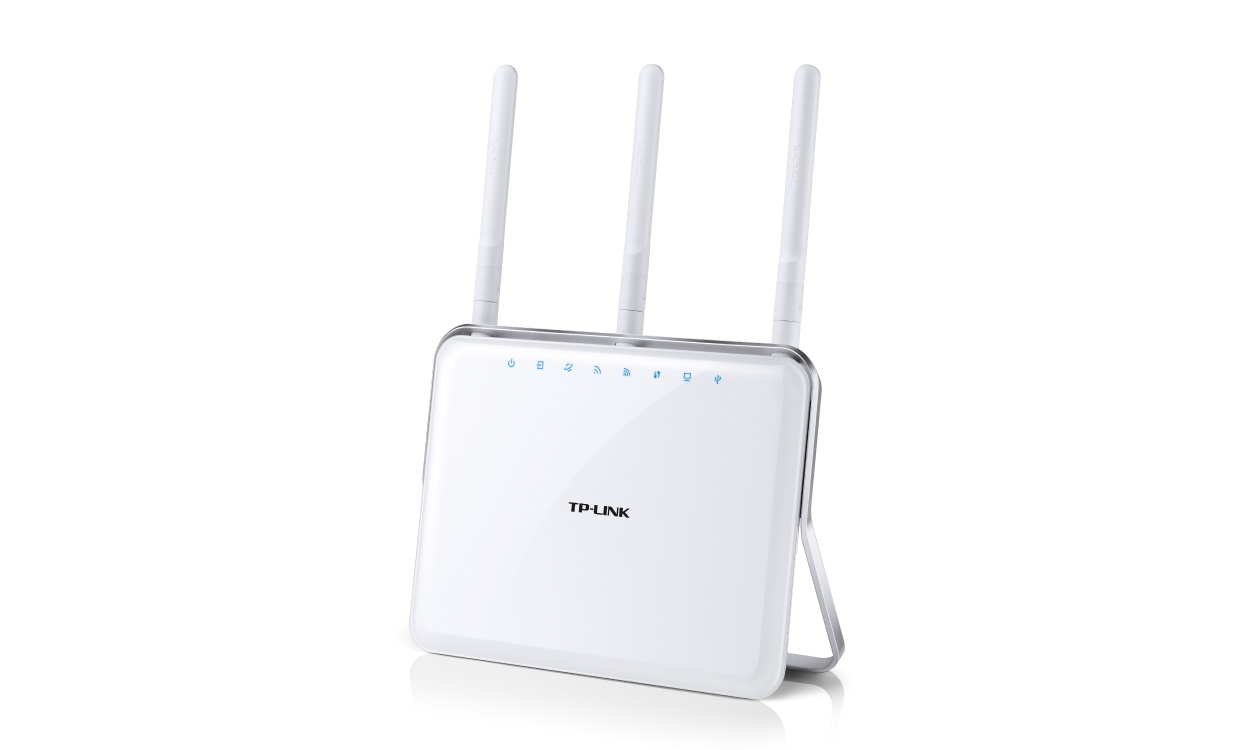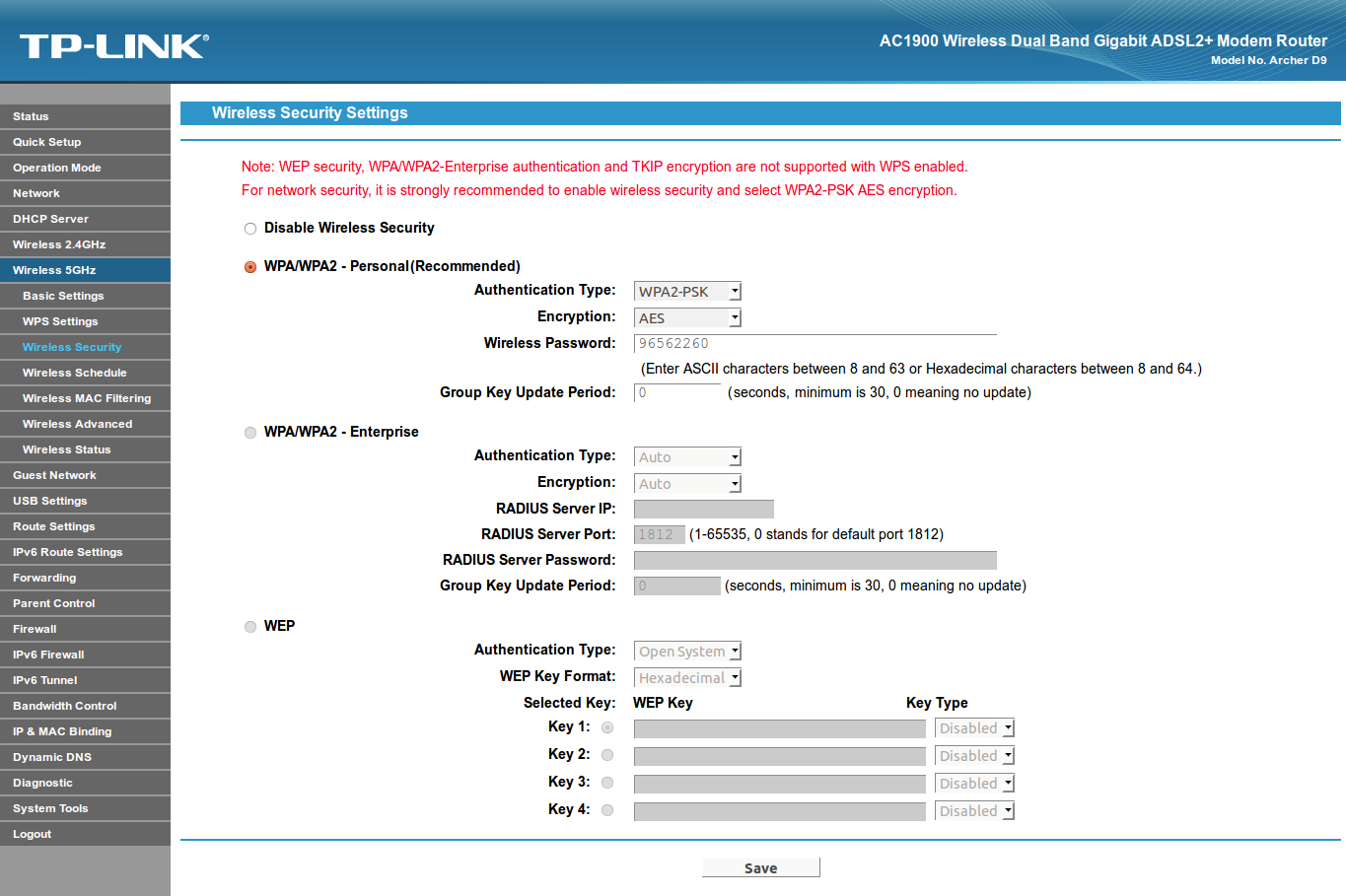TP-Link Archer D9 AC1900 ADSL2+ Modem Router review
It's nothing spectacular but offers solid performance nonetheless

If you need an ADSL router with good, though not spectacular, wireless performance and would find the ability to - slowly - share USB storage devices or printers with other systems around the house, the TP-Link Archer D9 is a solid choice. There are cheaper options, however.
-
+
Fast wireless connectivity; small footprint; USB ports are a bonus.
-
-
File sharing performance is slow; media sharing is buggy; illegal Wi-Fi defaults; TP-Link's user interface could do with an overhaul.

Setup
As with TP-Link's previous models, a mini-CD is provided with a setup application for absolute networking newcomers. This isn't required, however: once connected to the network and power the device boots up already configured to provide 2.4GHz and 5GHz wireless networking and a DHCP server. Entering "tplinkmodem.net" into any modern browser and inputting the default login details - user name admin, password admin - loads the configuration screen without the need for a client-side application.
Sadly for a flagship product, the Archer D9 uses the same old TP-Link interface common to the rest of the company's products. While this is great from a familiarity standpoint, it is looking a little dated these days and could really do with an overhaul to bring it up to the quality of rival devices.

Once logged in, configuring the router for internet access is simple: the ADSL details provided by your ISP go into the relevant boxes, are saved, and a reboot later you should be online. The router can also be configured in Ethernet mode, which disables the modem and re-purposes the fourth gigabit Ethernet port as a WAN connection. There's no option to disable routing entirely and use the device as a wireless access point, however; while you can simply leave the WAN connection disconnected for this, the router will fail to set its time and constantly fill the logs with DHCP errors.
For more advanced users, the Archer D9 includes plenty of functionality. The 2.4GHz and 5GHz networks can be configured independently, and support WEP, WPA, WPA2 and WPA2 Enterprise encryption with or without MAC filtering. It's also possible to configure a guest network, which includes optional filters: the guest network can be segregated from the LAN, prevented from accessing the USB ports, or even have its bandwidth limited or its traffic given a lower priority.
Despite being a UK model, the Archer D9 is supplied with the wireless region set to the US. Although there's plenty of overlap between US and UK networks, using the exclusive channels is illegal; changing this to UK manually, something that many users will not realise is necessary, is vital for anyone wanting to avoid the wrath of Ofcom.
Get the ITPro daily newsletter
Sign up today and you will receive a free copy of our Future Focus 2025 report - the leading guidance on AI, cybersecurity and other IT challenges as per 700+ senior executives
Gareth Halfacree is an experienced tech journalist and IT professional, and has been writing since 2006. In addition to contributing article for ITPro, Gareth has been featured in publications such as PC Pro, Techmeme, The Register, The MagPi, and Tom’s Hardware.
In addition to his digital articles, Gareth is the author of several best-selling books. These include the Raspberry Pi User Guide, an essential text for those looking to get started with their Raspberry Pi, as well as The Official Raspberry Pi Beginner’s Guide. Gareth also wrote the Official BBC micro:bit User Guide, a comprehensive guide to setting up the pocket-sized computer, learning to code on it, and even creating your own hardware addons.
-
 ‘Phishing kits are a force multiplier': Cheap cyber crime kits can be bought on the dark web for less than $25 – and experts warn it’s lowering the barrier of entry for amateur hackers
‘Phishing kits are a force multiplier': Cheap cyber crime kits can be bought on the dark web for less than $25 – and experts warn it’s lowering the barrier of entry for amateur hackersNews Research from NordVPN shows phishing kits are now widely available on the dark web and via messaging apps like Telegram, and are often selling for less than $25.
By Emma Woollacott Published
-
 Redis unveils new tools for developers working on AI applications
Redis unveils new tools for developers working on AI applicationsNews Redis has announced new tools aimed at making it easier for AI developers to build applications and optimize large language model (LLM) outputs.
By Ross Kelly Published
-
 Google layoffs continue with "hundreds" cut from Chrome, Android, and Pixel teams
Google layoffs continue with "hundreds" cut from Chrome, Android, and Pixel teamsNews The tech giant's efficiency drive enters a third year with devices teams the latest target
By Bobby Hellard Published